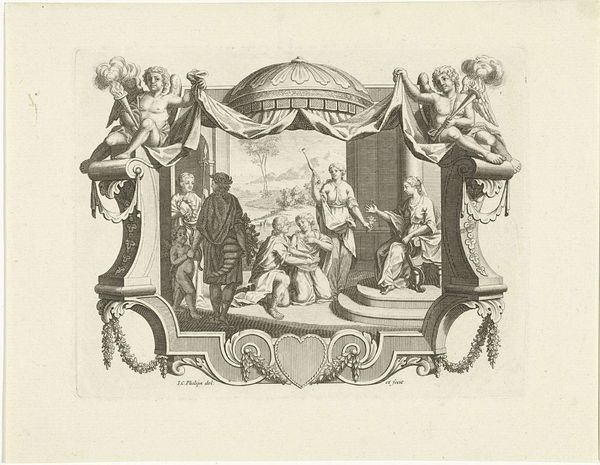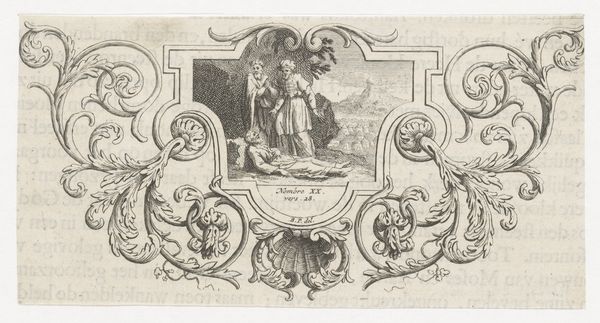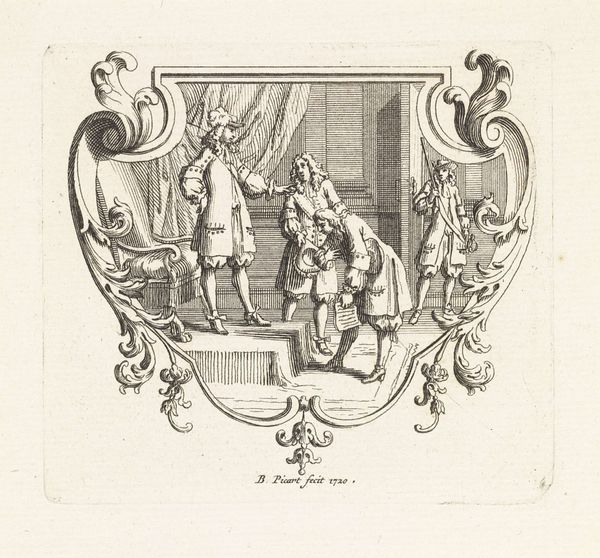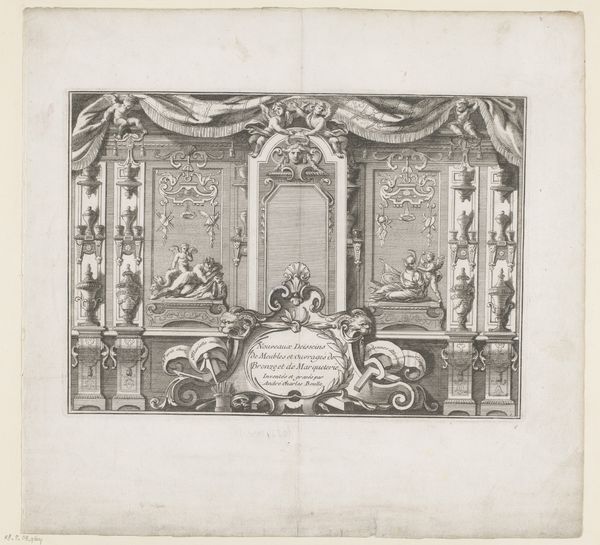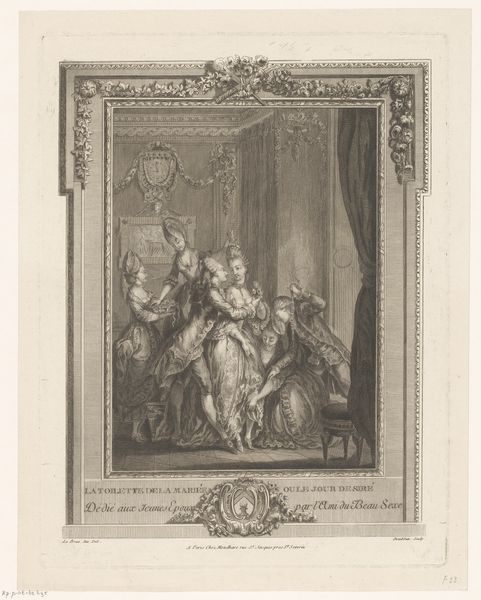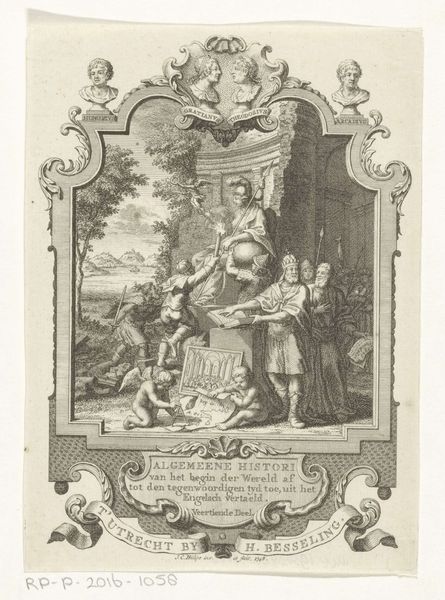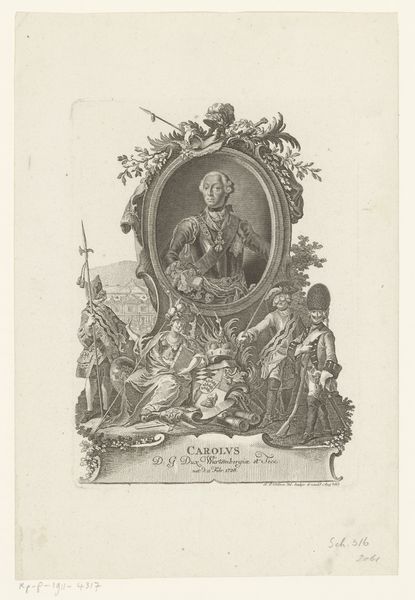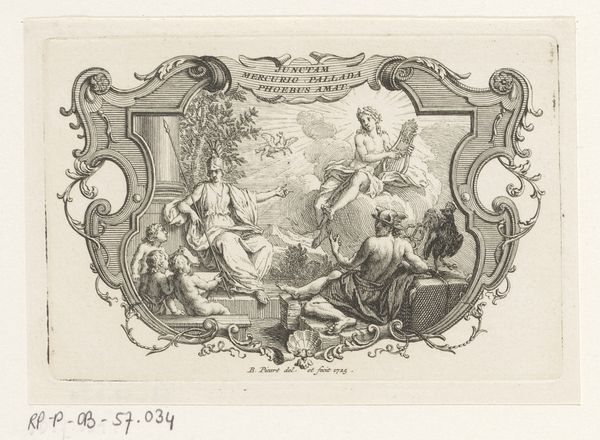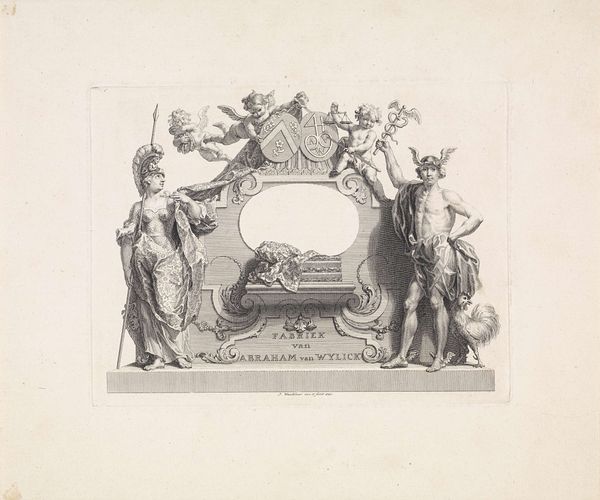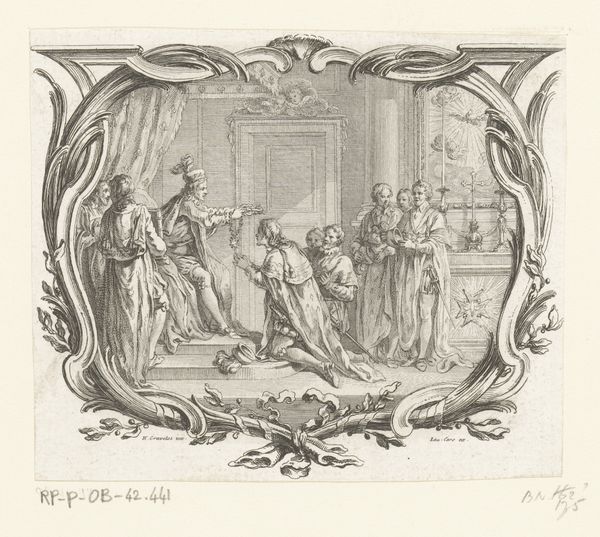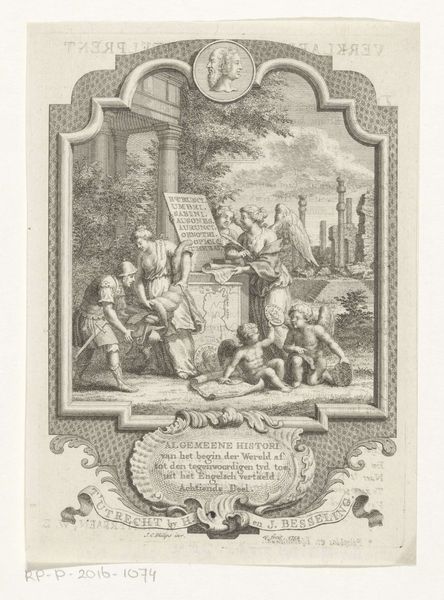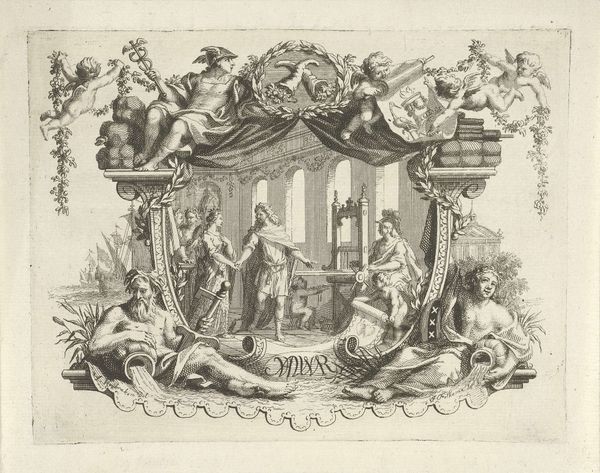
Eer (Honos) en Dapperheid (Virtus) lopen door een tuin c. 1730 - 1775
0:00
0:00
jancasparphilips
Rijksmuseum
print, engraving
#
allegory
#
baroque
# print
#
figuration
#
line
#
history-painting
#
engraving
Dimensions: height 113 mm, width 154 mm
Copyright: Rijks Museum: Open Domain
Curator: This engraving, attributed to Jan Caspar Philips, dates from around 1730 to 1775. It’s titled "Eer (Honos) en Dapperheid (Virtus) lopen door een tuin," or "Honor and Valor Walking Through a Garden." It’s held in the Rijksmuseum collection. Editor: First glance? There's a quiet strength, almost melancholy, in those figures, right? Even the lush garden seems muted, caught in a reverie. It makes you think of a bittersweet memory. Curator: That’s a perceptive observation. The piece clearly draws on Baroque allegorical traditions. "Honor and Valor" would resonate deeply with ideas about civic virtue. I would explore what the figures embody in a patriarchal context. We should delve deeper into those power dynamics represented. Editor: Totally. The cherubs scattering petals—they're offering beauty and blessing. I would interpret the garden—and more speculatively perhaps—as their future: blooming opportunities, but watched over by...fate? Or expectation? Also, the artist frames the whole scene in this incredibly ornate border. It feels almost like looking into a mirror… a dream... or an illusion? Curator: Interesting parallel. We need to recognize the way art serves social agendas. For instance, we should consider here how themes of honor and virtue supported elite societal structures. Editor: Good point. That heavy border makes me think. Is Philips also subtly hinting at the restrictions these ideals place on us, even as they elevate? Are we peering in at figures forever captured and idealized? Curator: That’s a useful point about confinement and the artificial construct of such virtues as "Honor". Also, where would an intersectional analysis situate us regarding the relationship between the idealized masculine, such as “Valor," and say, a feminist idea of civic contribution? Editor: Love that question. I have such a vivid image of us breaking through the ornamental borders, freeing the feminine ideal from the expectation to perform this valor in service to others. Curator: Thinking about the original patron, that radical subversion would surely disrupt the dominant ideology, shifting these figures, maybe reclaiming the narratives… Editor: Precisely. Now I look at the scene again—I am considering, "What if this wasn't just about the virtues as such, but our responsibility towards ourselves?" Curator: This art, like our interpretation, remains ever relevant—shaped by time, and demanding conversation.
Comments
No comments
Be the first to comment and join the conversation on the ultimate creative platform.
